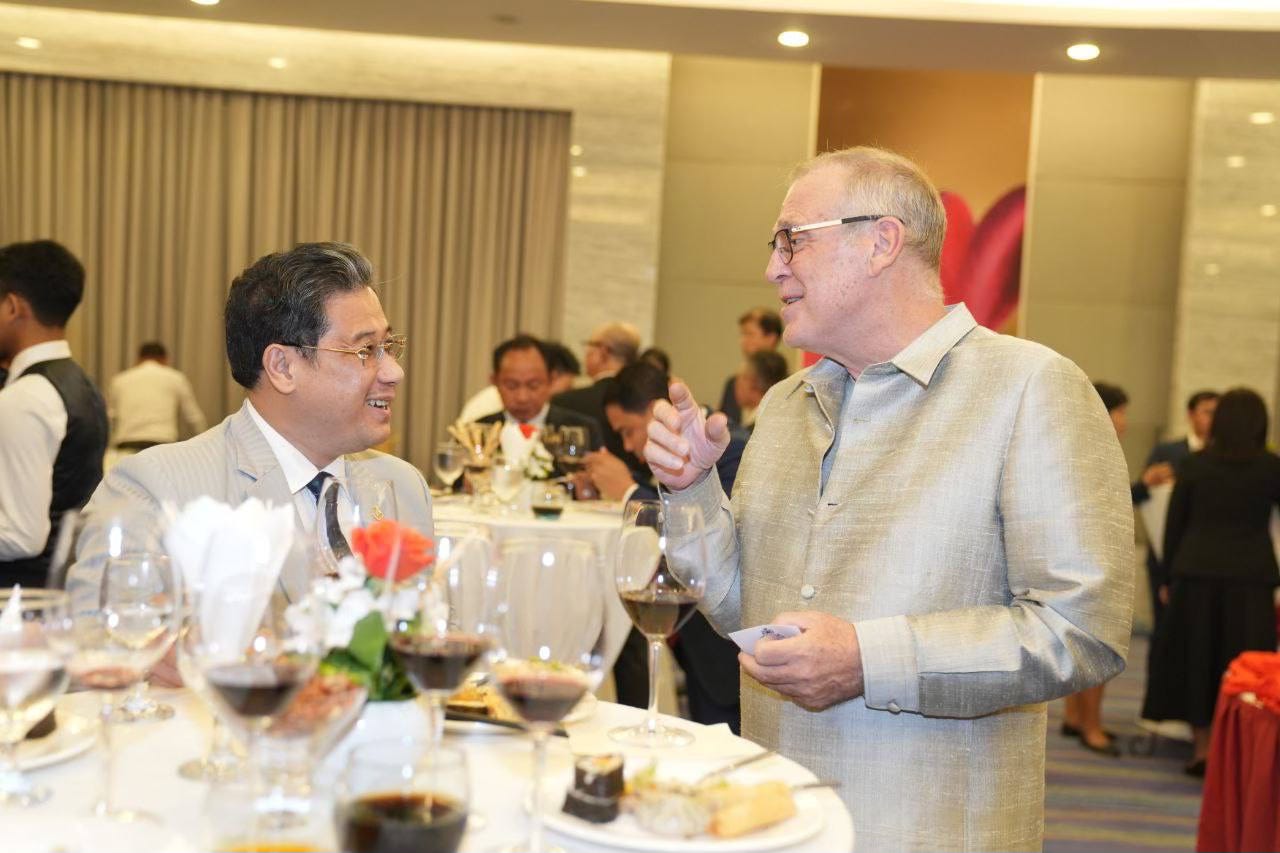The potential for electric riverine transport barges and electric cargo vessels in South East Asia and East Asia is significant, given the region's extensive network of rivers, coastal areas, and reliance on maritime transportation for trade and commerce.
Phase I of the “Mekong Economic Belt” includes up to ten 100 MW solar arrays with complimentary LFP electric battery storage solutions and distribution placed adjacent to the Phnom Penh Port (Transport Ministry) localities across the mainstream and tributaries of the Mekong river.
Also in Phase 1 is the establishment of cargo vessel conversion and construction, which are based at critical riverine logistic hubs such as Phnom Penh, Kampot and Sihanoukville.
Also envisaged in Phase II are numerous mobile “boxable” 20 and 40 foot shipping containers (or equivalent) for distribution of clinics, classrooms, water treatment, food processing, light manufacture and other important services and public goods.
Phase III envisages connection of the ten 100MW solar arrays and complimentary massive storage facilities to connect with the national grid.
Belt and Road Capital Partners has brought together government officials, corporate investors and equipment and service suppliers to launch the “Electrification of Cambodia’s entire riverine cargo vessel fleet.” The first US$120 Million, of the projected total budget of US$600 Million over 5 years, is drawn from the commercial arm of a major multilateral bank. Private “renewable energy” investors from Singapore and Hong Kong are currently negotiating another US$120 Million.
Key infrastructure suppliers have offered generous terms to be included in the electrification of Cambodia’s hinterland and main river navigation channels as well as commodity export and logistics firms. Electrification of processing and agricultural machinery is another key objective of the Mekong Economic Belt. Commodity value-add processing adjacent to the electrified ports allows for less waste product and more goods on each barge.
Digitalisation of logistics, services, education, finance, health, entertainment, trading and commercial data centres are also included in Dr. Wren’s Masterplan for electrification of Cambodia’s riverine cargo vessel fleet.
Here are some key points to consider in assessing their potential:
1. Environmental Benefits: Electric riverine transport barges and cargo vessels offer significant environmental benefits compared to traditional diesel-powered vessels. They produce zero emissions during operation, reducing air and water pollution in sensitive riverine and coastal ecosystems. This aligns with global efforts to combat climate change and improve air quality.
2. Cost Savings: While the initial investment in electric vessels may be higher than diesel-powered ones, the operational costs are often lower due to lower fuel and maintenance costs. Over time, this can result in significant cost savings for ship owners and operators, particularly as the technology matures and becomes more widespread.
3. Regulatory Support: Many countries in South East Asia and East Asia are implementing regulations and incentives to promote the adoption of cleaner maritime transportation technologies. This includes subsidies, tax incentives, and emissions regulations that encourage the use of electric and hybrid vessels.
4. Infrastructure Development: The successful implementation of electric riverine transport barges and cargo vessels requires adequate infrastructure, including charging stations, port facilities, and supportive policies. Governments and private sector stakeholders need to invest in infrastructure development to support the transition to electric maritime transportation.
5. Technological Advancements: Advances in battery technology, electric propulsion systems, and vessel design are driving the feasibility and efficiency of electric vessels. As technology continues to improve and costs decrease, electric riverine transport barges and cargo vessels are becoming increasingly viable alternatives to traditional diesel-powered ships.
6. Market Demand: The growing awareness of environmental issues and the desire to reduce carbon emissions are driving demand for cleaner transportation solutions, including electric vessels. As consumers and businesses prioritize sustainability, there is a growing market for electric riverine transport and cargo services in the region.
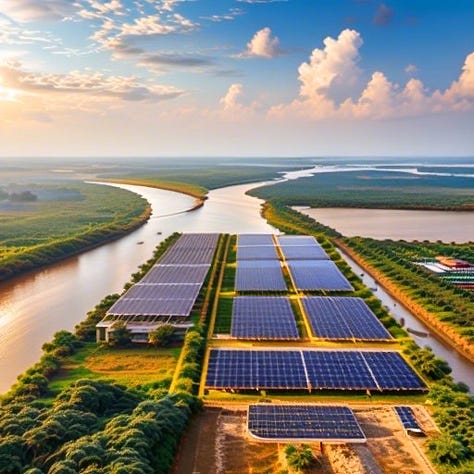
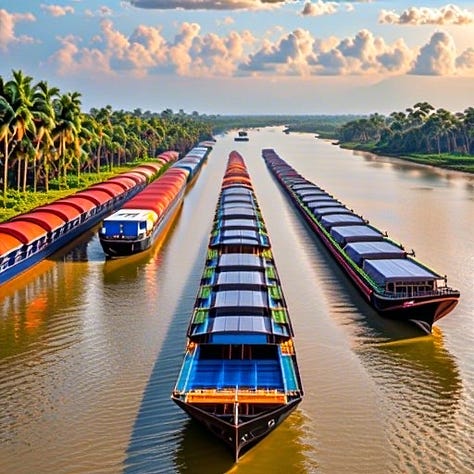
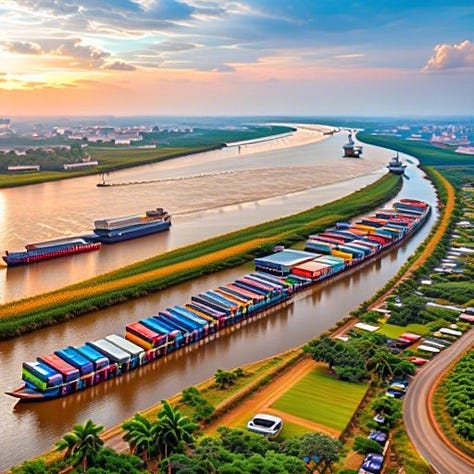
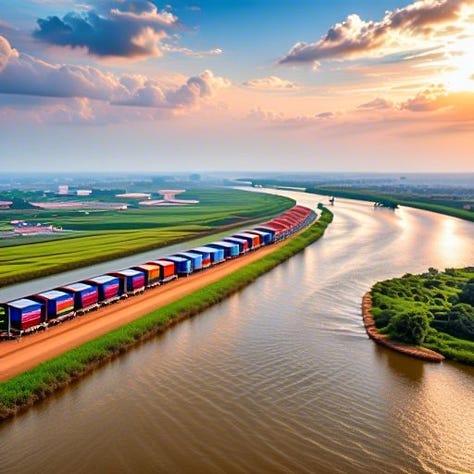
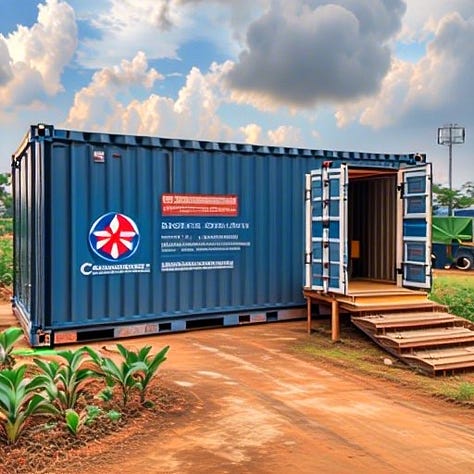

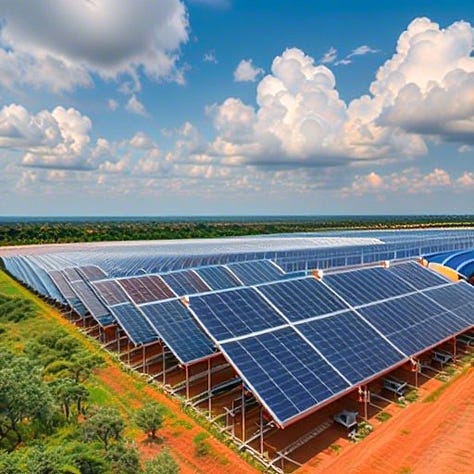
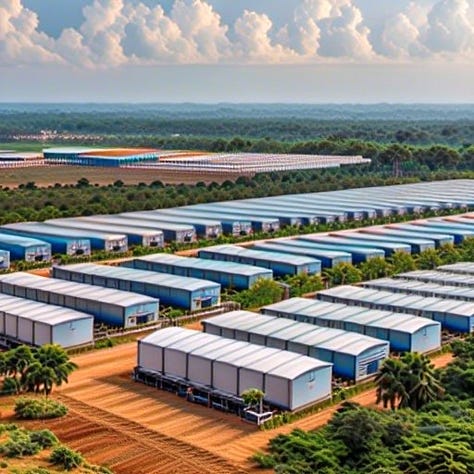

7. Challenges: Despite the potential benefits, there are challenges to overcome in the adoption of electric riverine transport barges and cargo vessels. These include limited availability of charging infrastructure, concerns about battery performance and reliability, regulatory barriers, and upfront capital costs. Addressing these challenges will be crucial to realising the full potential of electric maritime transportation in the region.
Overall, the potential for electric riverine transport barges and cargo vessels in South East Asia and East Asia is promising, driven by environmental concerns, cost savings, regulatory support, technological advancements, and market demand. However, realising this potential will require concerted efforts from governments, industry stakeholders, and the private sector to overcome challenges and accelerate the transition to cleaner and more sustainable maritime transportation solutions.
The Chair,
Dr. Digby James Wren
Cambodia: Sub-feeder multi-purpose terminals
Royal Academy of Cambodia
Research and Development
ENVIRONMENTAL AND SOCIAL INFORMATION
Applicable Policy and Standards.
ES Categorisation and Rationale.
E&S Scoping and Planned Instruments.
Environmental Risks and Impacts
Land Acquisition and Involuntary Resettlement.
Ethnic Minorities.
Gender Aspects.
Stakeholder Engagement, Consultations, and Information Disclosure.
Labor and Working Conditions.
Project-Level Grievance Redress Mechanism (GRM) and ES Monitoring.






